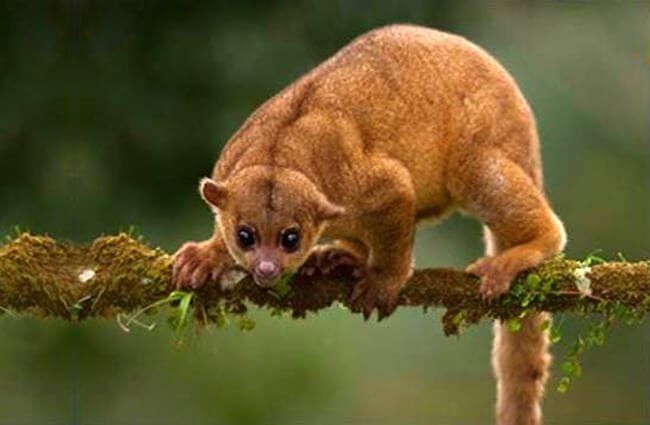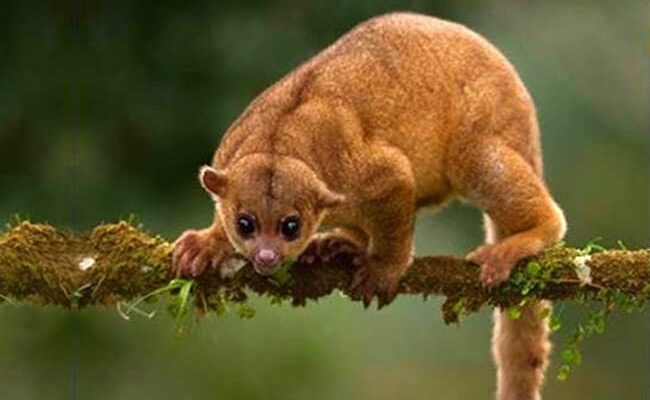
Kinkajous, also known as honey bears, come from Central and South America, and their habitats are as rich and diverse as they are. To understand kinkajous better, it’s essential to take a closer look at their natural environment. Let’s dive into the fascinating world of kinkajous!
Geographical Range of Kinkajous
Kinkajous primarily inhabit the tropical rainforests of Central and South America. From southern Mexico to western Ecuador, these animals have quite a significant range. You might think of these places as lush green jungles filled with tall trees, vibrant flowers, and the sounds of exotic birds and insects.
Their range includes countries like:
- Mexico
- Guatemala
- Honduras
- Nicaragua
- Costa Rica
- Panama
- Colombia
- Ecuador
What’s really interesting is that kinkajous thrive in both lowland and highland rainforests. They enjoy living in areas where they can easily climb and find food, like ripe fruits and nectar from flowers. Honestly, their choice of environment is vital for their survival, as they rely on a diverse diet of fruits and insects.
Preferred Habitat Types
Kinkajous are versatile creatures, which means they can adapt to various habitat types within their range. However, they generally prefer dense, moist forests. Why? Because these environments provide ample cover and food sources. Just picture a forest filled with towering trees that can reach over 100 feet high.
Here are some common habitats where kinkajous can be found:
- Tropical Rainforests: These are the most common habitats for kinkajous. They love the warm, humid climate and the variety of food available.
- Cloud Forests: In higher elevations, kinkajous can still be found. They thrive in cooler, misty environments that are rich in biodiversity.
- Secondary Forests: Surprisingly, kinkajous can adapt to areas that have been logged or disturbed, as long as there are still enough trees and food sources.
Kinkajous tend to stay high up in the trees, around 30 to 60 feet off the ground, where they can feel safe from predators. Tree canopies provide them not only food but also a vantage point to survey their surroundings.
Importance of Forest Canopies
The forest canopy is where kinkajous spend most of their lives, and it’s crucial for their survival. Imagine a giant leafy umbrella shielding them from rain and direct sunlight. This elevated lifestyle plays a vital role in their feeding and social behaviors.
Here’s why canopy life matters so much for kinkajous:
- Food Access: The canopy is rich in fruits, flowers, and insects, all of which are part of a kinkajou’s diet. They love to snack on fruits like bananas and figs!
- Safety: Being high up protects them from many predators, like snakes and big cats. It’s their safe haven where they can hang out and play.
- Social Interaction: Kinkajous are social animals. Living in the canopy means they can easily communicate and bond with others in their group.
You might be wondering if kinkajous ever come down to the ground. While they mostly stay in trees, sometimes they venture down for a snack or if they’re looking for a new place to explore. But for the most part, they’re happy swinging around in their leafy homes!
Threats to Kinkajous’ Habitat
Unfortunately, kinkajous face several threats that impact their habitat. Deforestation is a significant concern. As people cut down trees for agriculture or development, kinkajous lose their homes and food sources. Here’s the thing—when you take away a kinkajou’s cozy canopy, it’s not just about losing trees. It’s about losing an entire ecosystem.
Some other threats include:
- Climate Change: Changing weather patterns can affect the growth of trees and availability of food.
- Illegal Hunting: Despite their cuteness, kinkajous can be targeted for illegal pet trade.
- Human Encroachment: As urban areas expand, more forests are cleared, making it harder for kinkajous to find safe habitats.
Conservation efforts are crucial to help protect kinkajou habitats. Many organizations work tirelessly to raise awareness and promote sustainable living practices that prioritize wildlife protection. If you value these adorable animals, supporting such efforts can go a long way!
Kinkajous are fascinating creatures that deserve our appreciation and protection. They thrive in vibrant rainforests and lush canopies, but their habitats are under threat from human activities. By understanding where kinkajous live and the challenges they face, we can work together to ensure their future.
Let’s keep the conversation going about these amazing animals. By raising awareness and supporting conservation efforts, we can help keep their homes safe. Remember, every little action counts in protecting our planet and its incredible wildlife! So the next time you hear about kinkajous or see a picture of one, you’ll know just how special and important they are.

